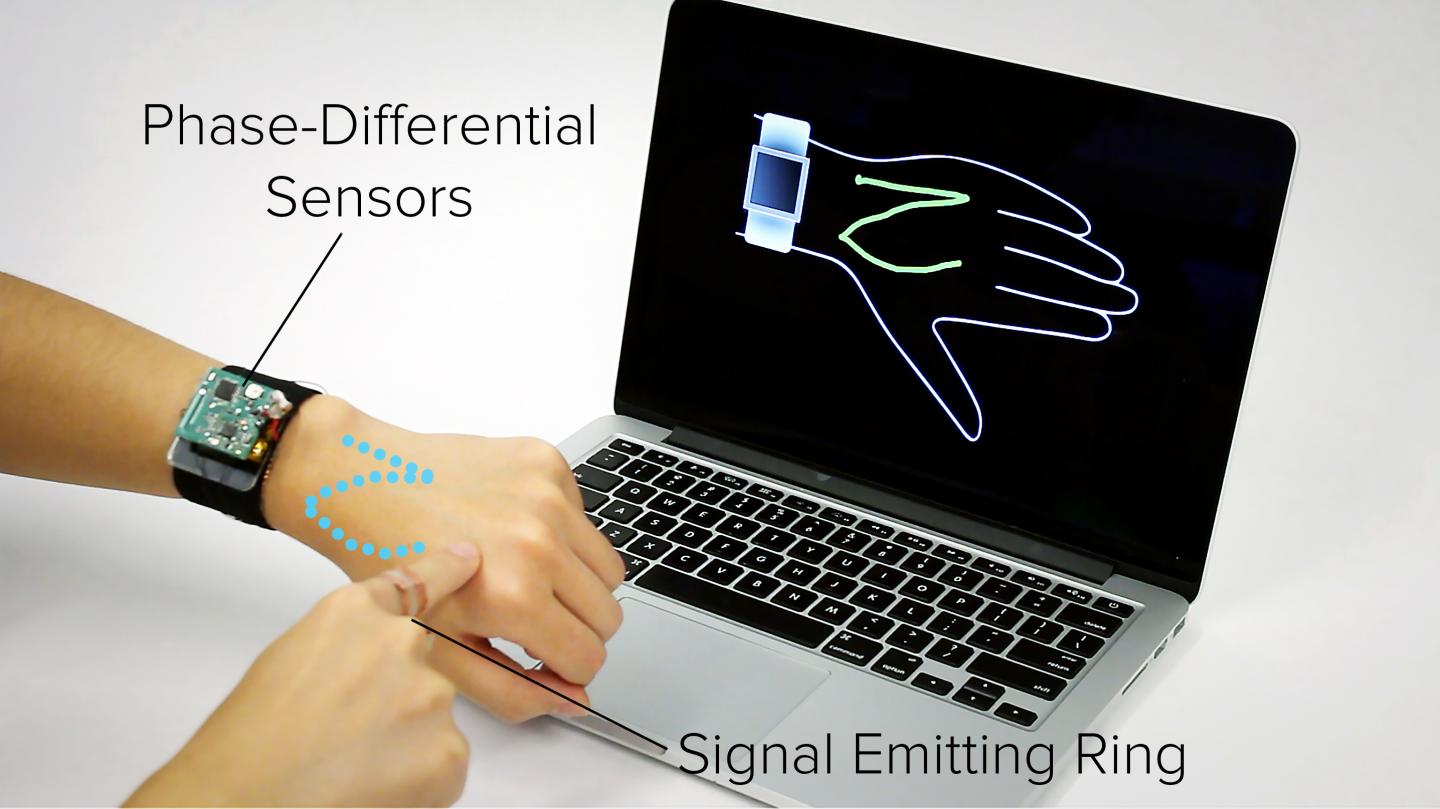Researchers turn an entire human arm into a touchscreen
Engineers have been looking for new ways to expand the traditional touchscreen, whether on a smartwatch or smartphone, for a while. When mere projections onto hard surfaces aren’t enough, you could always turn to human body parts.
Carnegie Mellon University researchers from the Human-Computer Interaction Institute’s Future Interfaces Group have done just that by developing a wearable technology called SkinTrack that allows for continuous touch tracking on the hands and arms. The technology is capable of detecting touches at discrete locations on the skin that act similar to buttons or slider controls.`

Other attempts at developing a touchscreen like this involved the use of flexible overlays, interactive textiles and projector/camera combinations, but SkinTrack, only requires that the user wear a special ring, which disperses a low-energy, high-frequency signal through the skin when the finger touches or just gets close to the surface.
“The great thing about SkinTrack is that it’s not obtrusive; watches and rings are items that people already wear every day,” said Yang Zhang, a first-year Ph.D. student in HCII.
The researchers wanted to expand the screen of digital devices because their screens are so tiny and your fingers tend to block the screens during use.
“SkinTrack makes it possible to move interactions from the screen onto the arm, providing much larger interface,” said Chris Harrison, assistant professor in the HCII and adviser to the research. The user wears a ring that produces a high-frequency electrical signal. When the finger gets near to the skin or touches the skin, that signal propagates through the skin.
How they did it
The team integrated electrodes into the watch’s strap so they could pinpoint the source of those electromagnetic waves. Electrodes that correspond to the 12 o’clock and 6 o’clock positions on the watch, for example, can detect phase differences that can determine the position of the finger along the width of the arm.
What the researchers found was that they could determine when the finger was touching the skin at a 99% accuracy rate and then they could resolve the location of the touches within just a few millimeters. Their results compared well with other on-body finger-tracking systems and approaches touchscreen-like accuracy.
Applications
The researchers demonstrated that SkinTrack could be used as a game controller, to scroll through lists on the smartwatch, zoom in and out of onscreen maps, and even draw. They also implemented a number pad to display additional applications.
The system is not perfect though. One major challenge is keeping the ring powered. Factors such as sweat and hydration also tend to change the signals if the device is worn for long periods of time.
So far, there’s no evidence that suggests that the radio frequency signals used by SkinTrack have any health effects.
Story via Eurekalert.


Comments are closed, but trackbacks and pingbacks are open.